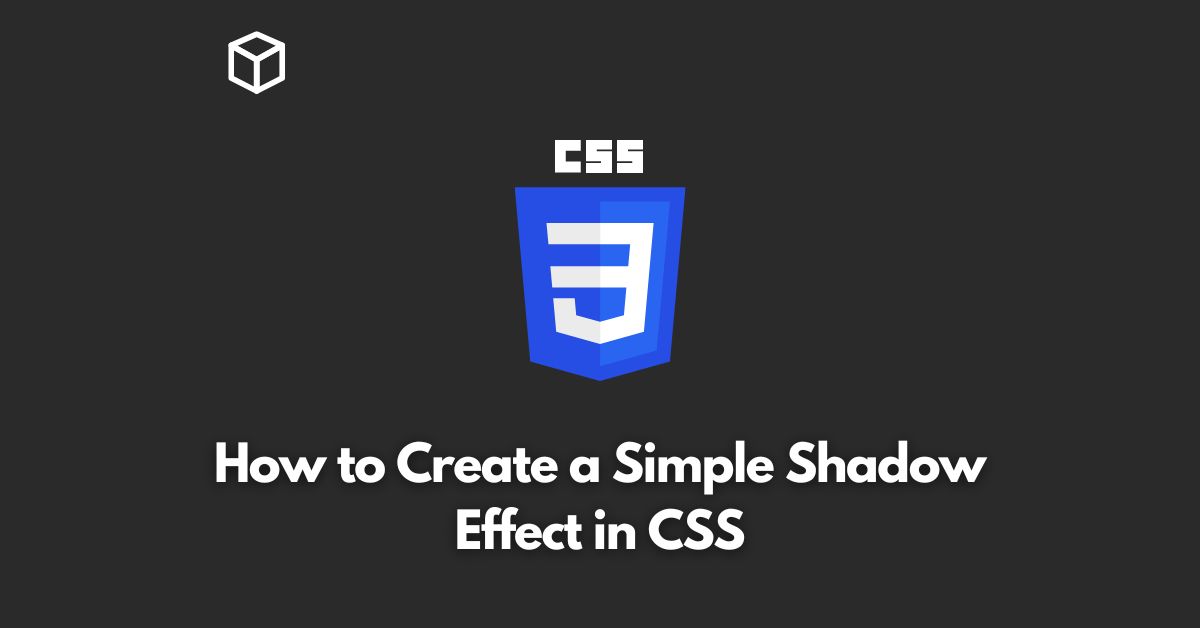Creating a simple shadow effect in CSS is a great way to add depth and dimension to your website design.
Whether you’re building a personal blog or a professional business website, a shadow effect can help add visual interest and make your site stand out.
In this CSS tutorial, we’ll go over the basics of creating a simple shadow effect in CSS, including a step-by-step guide and code examples to help you get started.
Understand the Basics of CSS Box Shadows
Before we dive into creating a shadow effect, it’s important to understand the basics of CSS box shadows.
A box shadow is a property in CSS that allows you to add a shadow effect to an HTML element.
The basic syntax for a box shadow is as follows:
box-shadow: h-offset v-offset blur spread color;
The h-offset and v-offset values determine the position of the shadow on the x and y axes, respectively.
The blur value determines the amount of blur in the shadow, and the spread value determines the size of the shadow.
Finally, the color value determines the color of the shadow.
Create a Simple Shadow Effect
Now that we understand the basics of CSS box shadows, let’s create a simple shadow effect.
To do this, we’ll use the following code:
box-shadow: 5px 5px 5px #ccc;
This code creates a shadow that is 5 pixels to the right and 5 pixels down from the element, with a blur of 5 pixels and a color of #ccc (light gray).
Add More Complex Shadows
If you want to create a more complex shadow effect, you can add multiple shadows to an element.
For example, you can add a shadow to the top and bottom of an element like this:
box-shadow: 5px 5px 5px #ccc, -5px -5px 5px #ccc;
This code creates a shadow that is 5 pixels to the right and 5 pixels down from the element, with a blur of 5 pixels and a color of #ccc (light gray). And another shadow that is 5 pixels to the left and 5 pixels up from the element, with a blur of 5 pixels and a color of #ccc (light gray).
Add a Hover Effect
You can also add a hover effect to your shadow by using the :hover pseudo-class in CSS.
For example, you can make the shadow bigger when a user hovers over the element like this:
ox-shadow: 5px 5px 5px #ccc;
}
element:hover {
box-shadow: 10px 10px 10px #ccc;
}This code creates a shadow that is 5 pixels to the right and 5 pixels down from the element, with a blur of 5 pixels and a color of #ccc (light gray) when the element is not being hovered over, and it creates a shadow that is 10 pixels to the right and 10 pixels down from the element, with a blur of 10 pixels and a color of #ccc (light gray) when the element is being hovered over.
Conclusion
Creating a simple shadow effect in CSS is a great way to add visual interest to your website and make it stand out.
By understanding the basics of CSS box shadows and using the code examples provided in this tutorial, you can easily create a simple shadow effect for your own website.
Whether you’re a beginner or an experienced developer, this guide will help you get started with creating beautiful and engaging shadows for your website.
Remember that as you become more comfortable with CSS, you can experiment with different shadow properties and values to create more complex and dynamic effects.
Additionally, there are also other CSS properties like text-shadow and box-reflect that can be used to achieve different types of shadow effects.
In summary, the key takeaways from this tutorial are:
- CSS box-shadow property is used to add a shadow effect to an HTML element
- You can create a basic shadow effect by specifying the horizontal offset, vertical offset, blur, spread and color
- You can create more complex shadow effects by adding multiple shadows to an element
- You can add hover effects to your shadow by using the :hover pseudo-class in CSS
I hope this tutorial was helpful in understanding how to create a simple shadow effect in CSS.
If you have any questions or feedback, feel free to leave a comment below.




